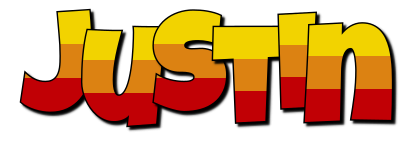When most of us hear the word “brainstorming,” we think of a group of people clustered around a whiteboard, often calling out ideas that their leader jots down. That standard image hasn’t changed in decades, and for good reason: many of our best business ideas happen when we’re working as a group.
Of course, running an effective brainstorming session isn’t as easy as it sounds. From vague goals to incessant criticism to discussions that veer off track, the wrong meeting can end up wasting everyone’s time.
If you’re hoping to get the most out of your group of thinkers, we’ve got you covered. Here’s what you should know about how to run a brainstorming session.
Gather the Right Team
If you want great ideas, it’s not enough to just assemble any group from your office. Instead, gather a diverse group of people from different backgrounds, sections of the company, and disciplines. They should also be familiar with the task, process, or project you’ll be discussing during the brainstorming session.
Keep in mind that bigger isn’t always better. Sticking to around 5-10 people will ensure that everyone’s voice is heard without letting the session devolve into chaos.
Prepare for Your Meeting
When you invite each member of your new team collaboration, don’t forget to provide them with everything they need to know. This includes not only the meeting time, but also any reading materials they should look through in advance. If you want them to bring questions or thoughts, now is the time to ask.
In addition, don’t forget to bring the snacks! Not only is this an enticing reward for participation, but it’s also great brain fuel.
Lay Down the Rules
To ensure that your brainstorming team is focused on the goal, lay down a few rules right off the bat. This should mean stowing their devices away, as well as explaining the strategies you’ll be sticking to below.
In addition, it often helps to refresh everyone on your goals for the brainstorming session as a whole. Just as you’d follow these tips for achieving any business goal, make sure you define what you hope to achieve first and foremost.
Designate a Session Facilitator
Brainstorming sessions are a great way to come up with tons of great ideas—but the process can get messy. Sometimes, ideas snowball in the wrong direction, group members become focused on minutiae instead of the big picture, and not everyone has a chance to contribute.
That’s where your facilitator comes in.
Your facilitator should be someone with a keen sense of the direction your group needs to take their brainstorming. They should also be a neutral party with good organizational skills, and they should have no qualms about redirecting your group’s focus as needed.
During the session, your facilitator should take notes about your team’s ideas. After you’re finished, they should dole out any action items and recaps. They may also help you send thank-you emails and prepare your ideas to be shared with the rest of your team or company.
Start With a Warm-Up
It can sometimes be hard to jump right into the process of creative brainstorming. If you’ve chosen participants from across your company, especially people who don’t know each other well, they may not feel comfortable chiming in.
Even if your team knows each other, start with some quick icebreakers—ten minutes or less—to energize them. This can include silly “get to know you” exercises as well as brainstorming-based icebreakers like word association.
Try Different Strategies
As mentioned above, most of us picture “brainstorming” as a group calling out ideas as someone writes them on a whiteboard. While this is a classic strategy, it’s not the only one available to you.
Mix things up by trying rapid ideation, mind-mapping, or round-robin brainstorming. For longer meetings, you might also give participants breaks, allowing them a few minutes for quick research or silent ideation.
Don’t Cross Anything Off the List
It goes without saying that not all of the ideas you’ll come up with will be winners. However, circling back to criticize existing ideas can not only kill the flow of conversation, but also discourage participants from volunteering their thoughts.
Make sure you or your facilitator redirects the discussion whenever there are critical interruptions. No idea is too absurd or outlandish for now, especially when out-of-the-box thinking often generates great solutions. Focusing on quantity over quality is actually helpful here: the more ideas you come up with, the better your chances of finding one that works.
Change the Question
While you should have laid out your goals for the brainstorming session in the beginning, it can sometimes be helpful to change the constraints.
For example, what if you had to approach your current team project with half the budget, or with twice the budget? What if you had more time to do it, or less time? How could you alter your project workflow if you had more people on your team to help?
Changing the parameters can help spark new ideas and out-of-the-box thinking that can lead you to success.
Try These Brainstorming Session Tips Today
Whether you’re working on a collaborative project or seeking an idea to revolutionize your brand, the right brainstorming session can be invaluable. If you’re ready to jump in, make sure to use the strategies above. Planning in advance ensures that you’ll have everyone working as a team and coming up with great ideas in no time.
Want more of the tips you need to build your brand? Take a look at the other business and tech content on our site!

